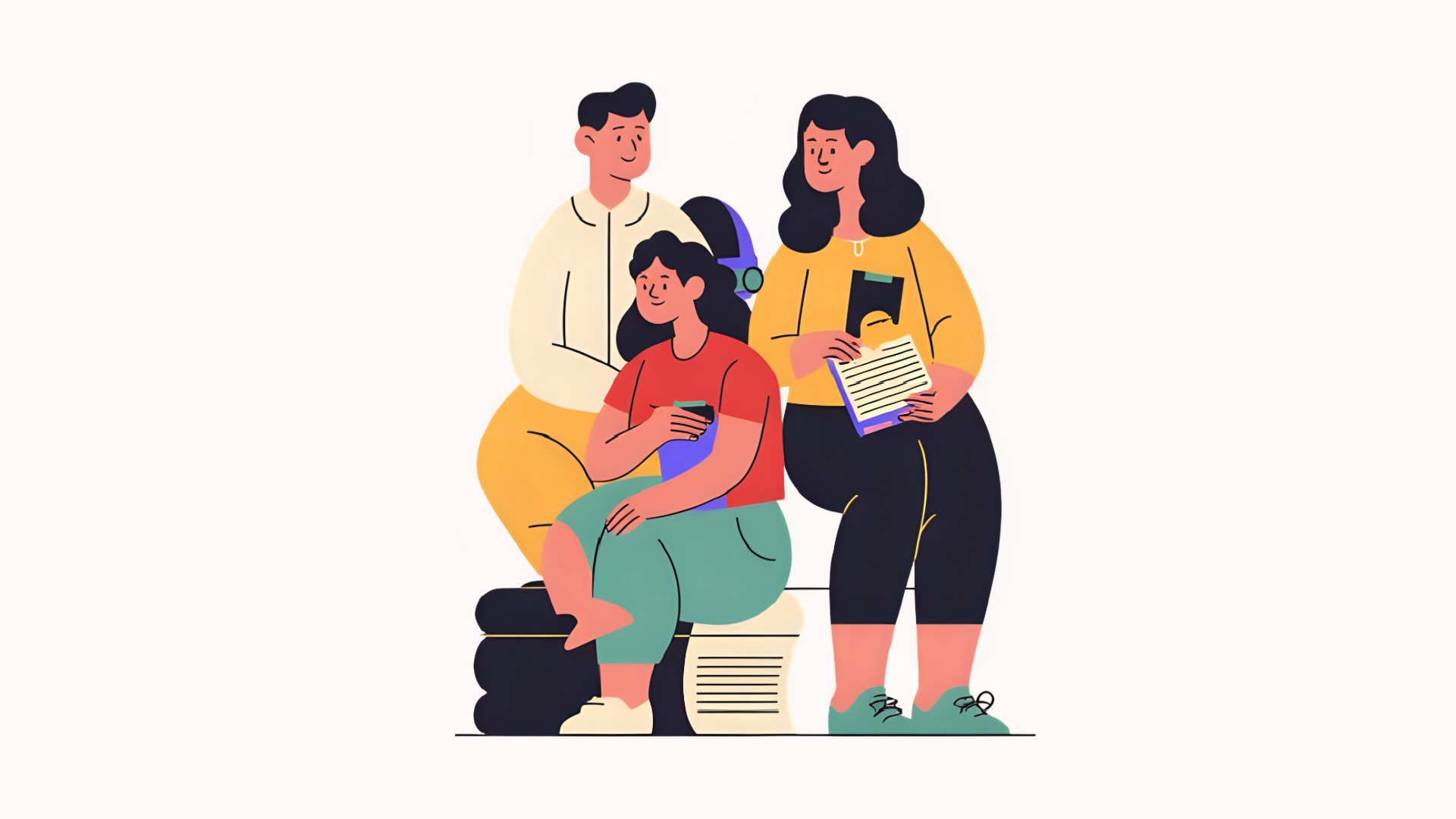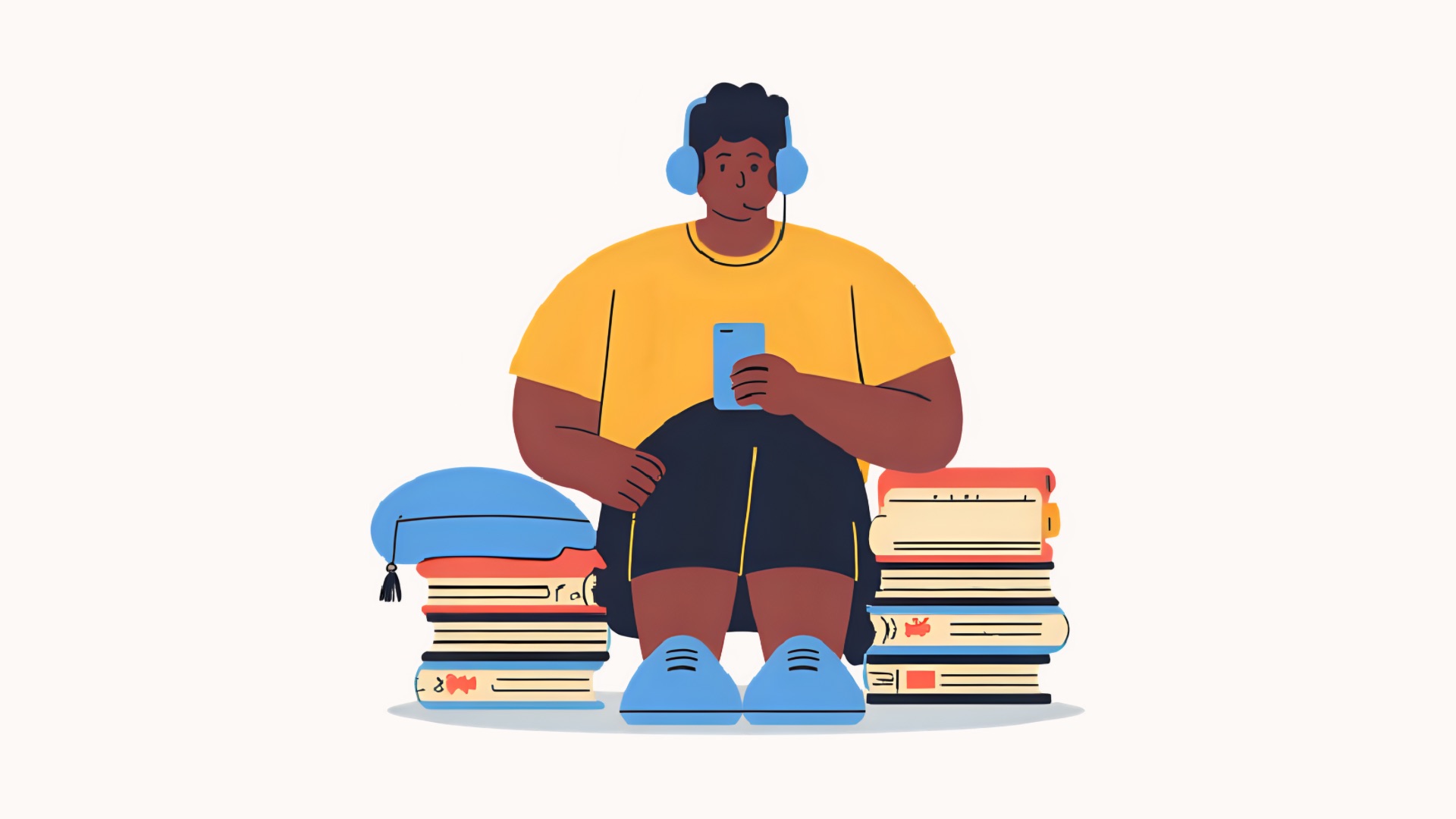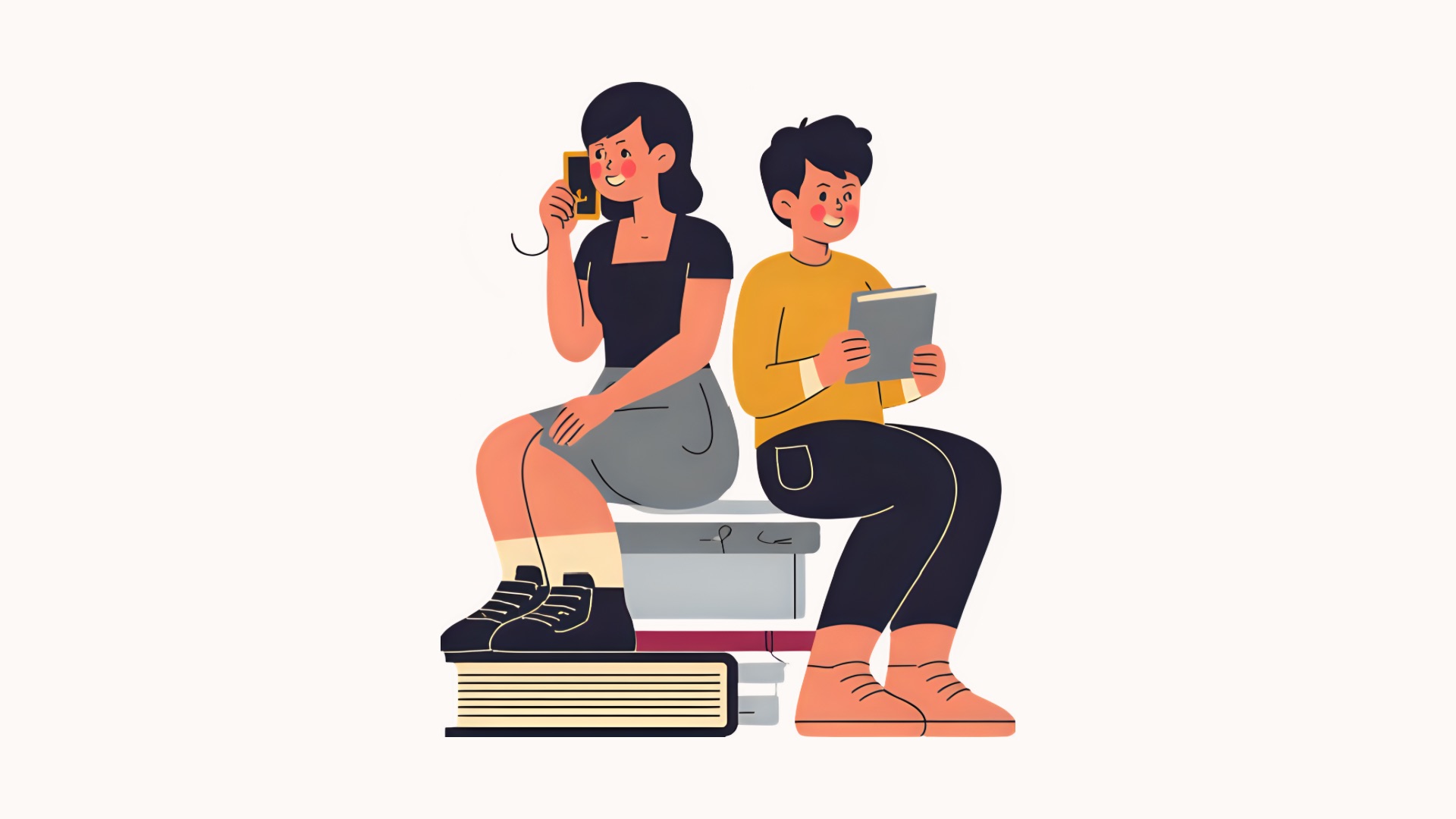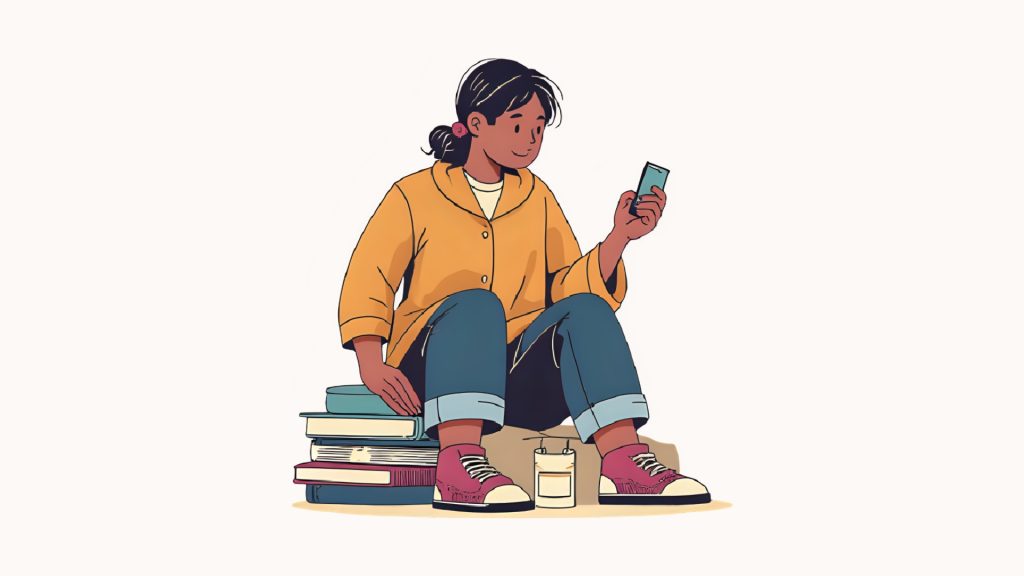Teens in charge
Public libraries have long been pillars of community engagement — providing spaces for learning, connection, and personal growth. And yet, somehow, providing meaningful, relevant services to teens remains a challenge for most.
Adolescents have unique social, developmental, and cultural needs that traditional library programs and spaces don’t address — leading to disengagement and underuse. This gap underscores the importance of participatory service: a co-creative approach in which libraries involve community members and users in designing, developing, and delivering services. Participatory service fosters ownership, strengthens social bonds, and transforms libraries from passive service providers into active partners in community building. When it comes to teens, this is missing.
Completely.

The hyperlinked library model, as Stephens (2016) describes, envisions libraries as adaptive, networked, and human-centered. He highlights that effective, forward-thinking librarians approach policies, decisions, and experiments with a human-centered perspective, prioritizing empathy and the needs of people. This begs the question: do libraries see teens as people? The research, well lack of, tells us they don’t (Bernier, 2025).
We can do better.
By placing the human element at the center of library services, public libraries create spaces where teens are empowered to shape collections, environments, and programming that meet their needs and foster meaningful connections.
No space, no voice
Dedicated teen spaces aren’t a luxury. They’re essential for positive youth development, social engagement, and skill-building. And yet, many public libraries operate under traditional models that fail to meet the developmental and social needs of young adults (Bernier & Males, 2014). Barrett (2021) highlights that lower-income youth often face barriers in accessing safe, welcoming public spaces where they can exercise agency and feel belonging.

Without areas designed specifically for teens (and preferably with teens), opportunities for social interaction, collaboration, and self-expression are limited. As Casey and Stephens (2008) point out: libraries must actively respond to teen interests and provide programs and spaces that allow them to feel valued and included.
Building with teens
Participatory service moves libraries beyond traditional service delivery by involving teens as co-creators. In this model, library staff and users collaborate to develop new programs, apply user-centered design principles, and empower teens with agency over library offerings.
By breaking down barriers and identifying blind spots in service assumptions, participatory service would ensure that programming is relevant and reflective of actual teen needs (not what adults think they need). This approach aligns with the hyperlinked library’s vision of ongoing adaptability, radical engagement, and human-centered service.

Klinenberg (2018) stresses that libraries are a vital part of a community’s social infrastructure, serving as key spaces that support community connection and well-being. Participatory service enhances this role by strengthening relationships, fostering inclusion, and encouraging civic engagement. Libraries that engage young people in meaningful collaboration help cultivate future citizens who are active contributors in their communities, not just passive users of resources.
This feels like a no-brainer.
Spaces that actually matter
Pulling from four articles I read last week for INFO261A: Programming & Services for Young Adults, a unifying theme emerged: public library spaces and programs should be intentionally designed to be inclusive, flexible, and participatory — empowering teens to engage, create, and exercise agency (Barrett, 2021; Bernier & Males, 2014; Cranz & Cha, 2006; and Koh et al., 2024).
A few ways to implement participatory service in teen spaces, would be to:
- Engage teens in program development.
- Create flexible, youth-friendly spaces.
- Foster mentorship & peer leadership.
- Leverage technology & social media.
- Center the human element.
Participatory service strengthens libraries as social infrastructure by building trust, enhancing inclusivity, fostering civic engagement, improving service relevance, and increasing resilience.

In times of crisis or rapid change, libraries with strong participatory connections can more effectively rally resources and assist their communities. This approach transforms libraries into a people’s place, where the community actively shapes services and spaces rather than passively consuming them.
The library everyone deserves
Teen-centered libraries are dynamic ecosystems where learning, social connection, and civic engagement converge. Through participatory service and the hyperlinked library approach, libraries can empower teens, strengthen social bonds, and respond adaptively to evolving community needs — growing alongside it.
Klinenberg (2018) notes that libraries gather people from diverse backgrounds and interests (hello, teens!) to engage in a vibrant, democratic community. He argues that strong social infrastructure, like libraries, is essential for building a better society. Heck, yeah.
By centering human relationships and giving teens a voice in shaping their spaces and programs, libraries move beyond static institutions to become inclusive, participatory, and resilient hubs that truly serve everyone.
past, present & future
The lack of dedicated teen spaces leaves a gap this future young adult librarian is determined to fill. Having two teenagers and working in school libraries drives me to do more than provide young people with books and programs they don’t want. Leaning into participatory service and the hyperlinked library model, the opportunity for libraries to welcome teens as active partners is there.
There’s much work to do. And I can’t wait to get started.
____________________
References
Barrett, E. J. (2021). Defining Their Right to the City: Perspectives from Lower-Income Youth. Urban Affairs Review (Thousand Oaks, Calif.), 57(3), 709–730. https://doi.org/10.1177/1078087419892081
Bernier, A. (2025, September 7). AB’s abstract lecture: Socially defining YAs . . . with evidence [PDF]. https://drive.google.com/file/d/1DRXv66H14PlXHA6IOfsJ2v1AQGUXkwhF/view?usp=drivesdk
Bernier, A., & Males, M. (2014). YA spaces and the end of postural tyranny. Public Libraries, 53(4), 27.
Casey, M., & Stephens, M. (2008). Embracing service to teens. Tame the Web. https://tametheweb.com/2008/05/15/embracing-service-to-teens/
Cranz, G., & Cha, E. (2006). Body-conscious design in a teen space. Public Libraries, 45(6), 48.
Klinenberg, E. (2018, September 8). Civil society needs the library. The New York Times. https://www.nytimes.com/2018/09/08/opinion/sunday/civil-society-library.html
Koh, K., Balasubramaniam, G., Knox, E., & Zalot, A. (2024). Evaluating The Value and Impact of Makerspaces on Public Libraries. Proceedings of the ALISE Annual Conference. https://doi.org/10.21900/j.alise.2024.1731
Stephens, M. (2016). The heart of librarianship: Advancing the humanist agenda. American Library Association.
*images created by author in Canva

Hi Bevin,
I think if more libraries designed better spaces for teens, then there would be more teens coming into the library. I have always discussed that fact that the best way to design teen spaces is to ask teens what they would like their space to look like. Many libraries have teen advisory boards, where teens and librarians come together to exchange ideas in a safe setting. I noticed that libraries that have creative themes and decorations in teen spaces tend to attract more teens. I think that many libraries think teens do not really care for libraries so they do not try as hard with the programming or design of teen spaces. I know that if libraries try harder to cater to teens, there will be more teens coming into the library.
Hi @ctaher, thanks for the reply.
I wholeheartedly agree that more teens would embrace the library if only the library made more effort to actually embrace them. And some do, but they remain an underserved population that could use some attention.
Thank you for bringing up this aspect! Teens are a real challenge, speaking strictly from the daily experiences at our library. It’s difficult to get information to them, and they are a group in crisis (as evidenced by this report – https://pubmed.ncbi.nlm.nih.gov/37792968/). Another barrier we’ve noticed is that teens are not keen on interpersonal interaction, for a variety of reasons. Our teen programming often includes some hidden enticement at interaction – a scavenger hunt where they much interact with a librarian for example. This allows them to practice and get more comfortable speaking with library staff. All teen events also have some icebreaker activities too, to get them communicating with each other.
Thanks for the reply, @hharrisbrady. The Surgeon General’s report is eye-opening!
Serving teens is certainly tricky and you’ve mentioned some valid reasons why. It’s good to note the level of communication/interaction with others depends on the teen (just like any other human), but, overall, those Gen Z’s certainly have a different way of expressing themselves in public! And their communication style leaves no room for small talk.
My kids are near the tail end of Gen Z (born 2006 and 2010), and I’m a GenXer, so I’ve read a little on how to best bridge the communication gap and do my best to be quick and direct with them. Despite their tech habits, this generation appreciates meaningful face-to-face communication. I also work in school libraries, so it’s been helpful to get acquainted with different communication styles for the generation(s) I’m serving.
Perhaps training on generational communication styles is needed for library staff dealing with teens?
Bevin,
You make an excellent point. The Teens Center library provides teens with, as you said, “growing with the library.” I went abroad for an international librarianship program. We visited a school during their summer program (it was run like a YMCA), and they had the other students who had participated in the program as a child teaching the younger children, and mind you, they were 15+. Both the children and the volunteers looked engaged and generally happy to participate. I was inspired to see them all work together as a community of students.
Hi @jcrystalc, I’d love to hear more about your international librarianship program. (I’d love to work internationally.)
Thanks for sharing your experience. I see this age-range interaction at work in school libraries and it’s never been anything but a positive experience for the teens or the younger ones involved. (It’s also incredibly heart warming to watch.)
B.
I went on an abroad summer class in Colombia. Check your emails for abroad classes. I would be interested in working out of the country and understanding how different countries deal with librarian positions and the communities they serve.
That sounds incredible. I will be sure to pay closer attention to those opportunities. Thanks for the info @jcrystalc
Ok, it should work. I guess I had to put it in a category, now it shows leave a reply. Thank you very much for letting me know!